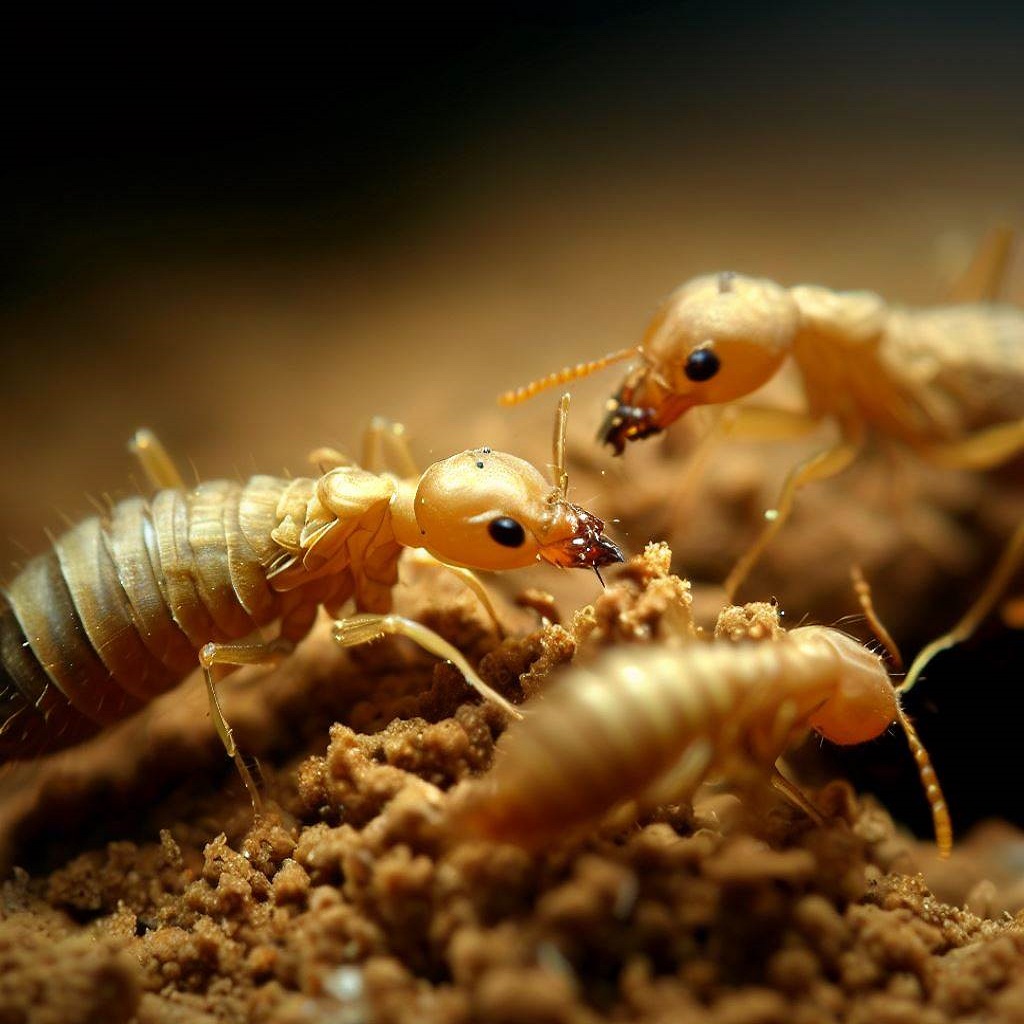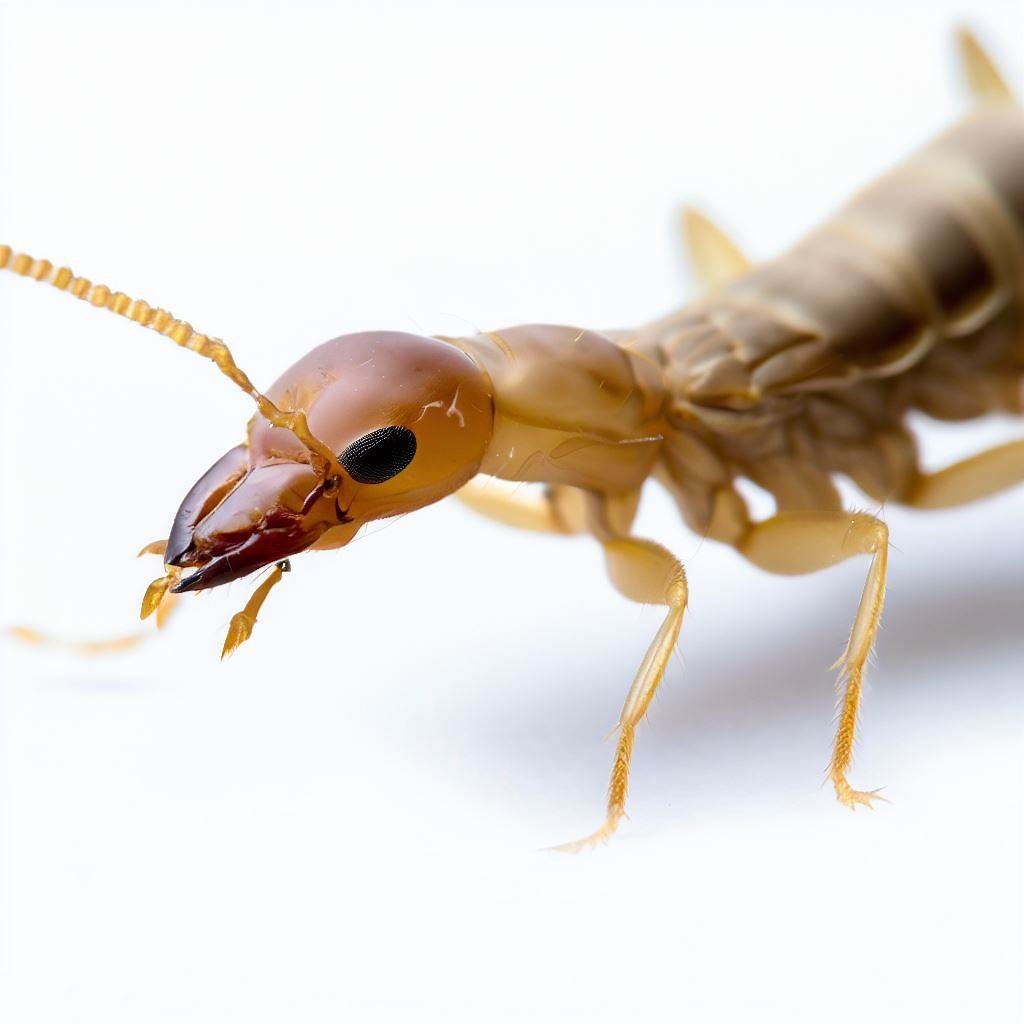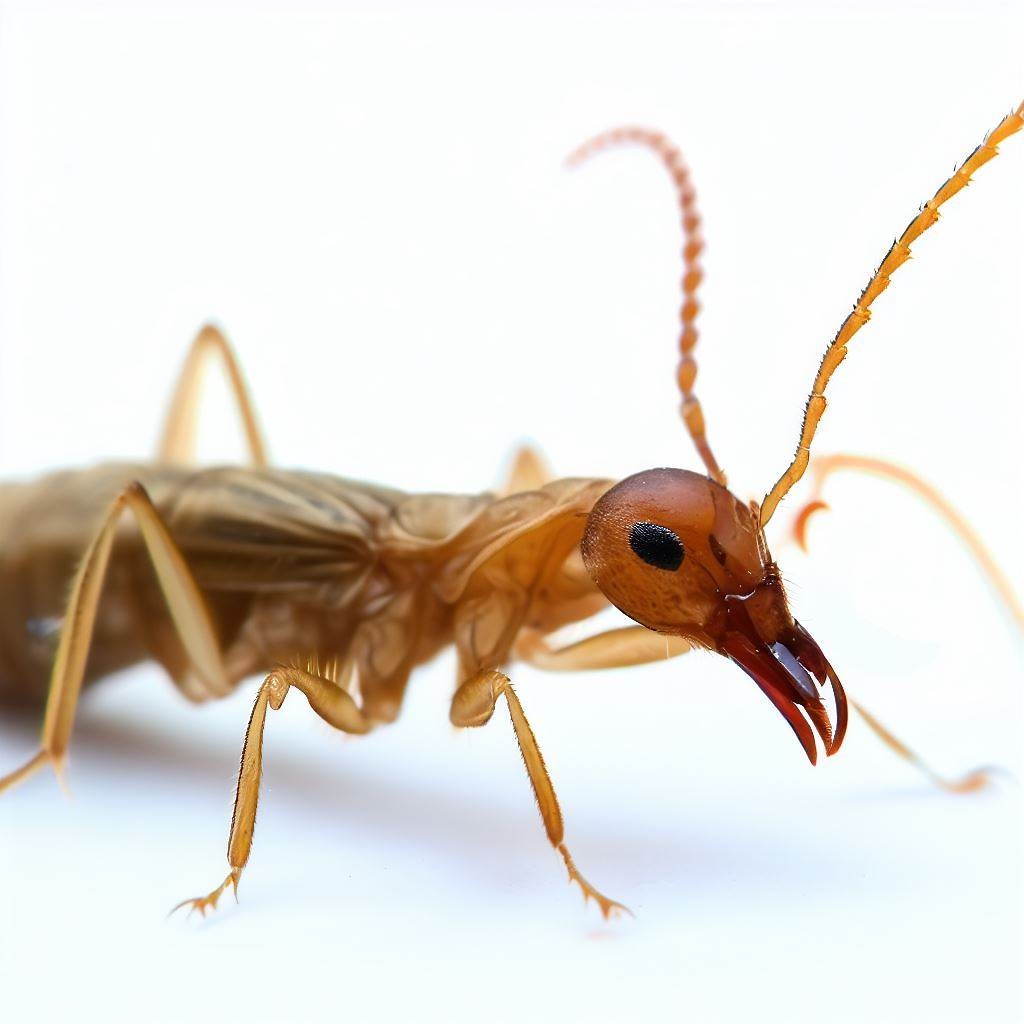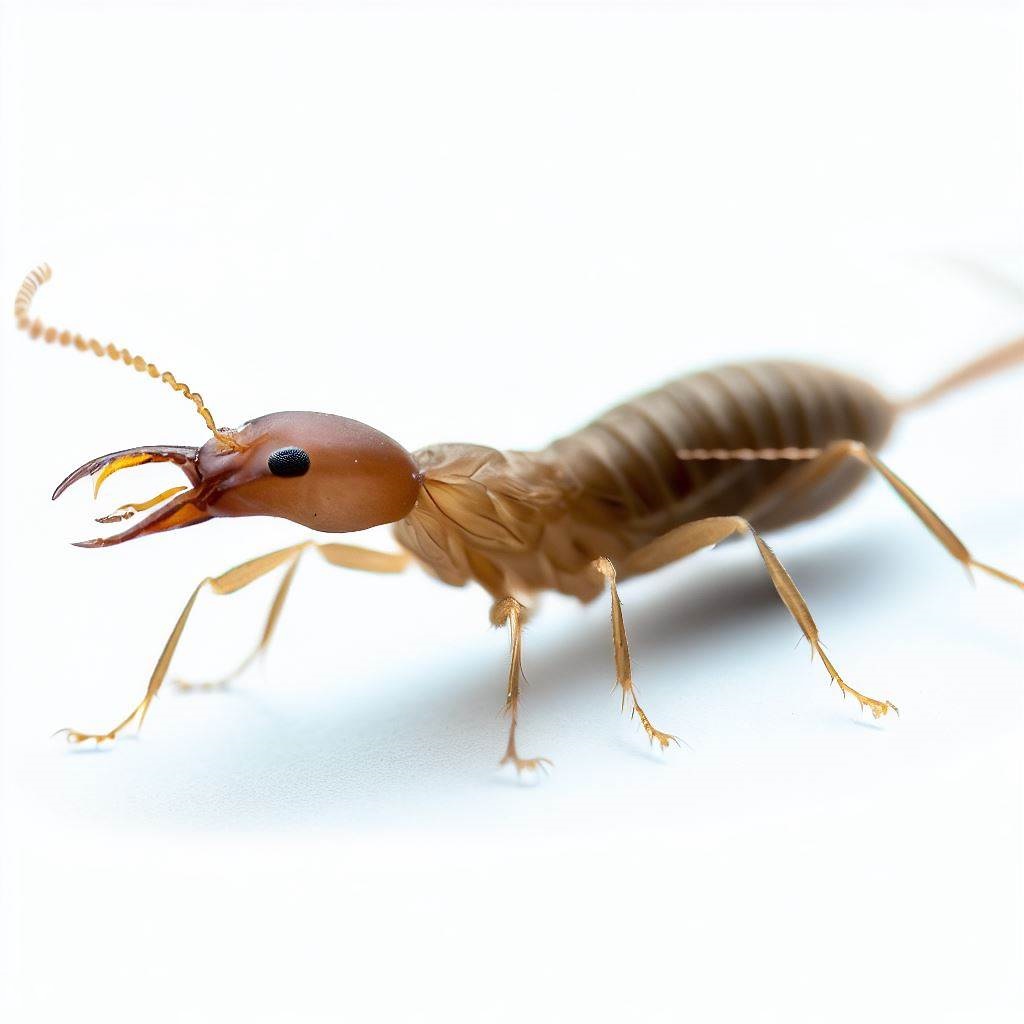Everything About Termites

| Everything About Termites | |
|---|---|
| Feature | Description |
| Size | Typically ranging from 4 to 15 mm in length, depending on caste and species. |
| Color | Varies from white to light brown. Reproductive termites tend to be darker. |
| Diet | Primarily cellulose from wood, but also target paper, books, insulation, and even swimming pool liners and filtration systems. |
| Habitat | Usually establish colonies in the ground, but can also be above-ground if enough moisture is present. |
| Life Span | Worker and soldier termites live for about 1-2 years, while a queen termite can live for decades under optimal climate conditions. |
Dissecting Termites Anatomy
Termites are eusocial insects known for their ability to consume cellulose, especially in wood, making them both ecologically significant decomposers and, unfortunately, pests in human structures. They belong to the order Blattodea, closely related to cockroaches. Let’s explore their anatomy:
Head
Thorax
Abdomen
Internal Systems
Castes and Morphological Differences
Head
- Antennae: Termites have beaded, straight antennae.
- Mandibles: Depending on their caste (worker, soldier, reproductive), the shape and size of the mandibles vary. Soldiers have large, often specialized mandibles for defense, while workers have mandibles adapted for chewing wood or other plant material.
- Compound Eyes: Reproductive termites (alates) possess compound eyes, while workers and many soldiers are blind and lack well-developed eyes.
- Fontanelle: It’s a glandular pore on the head of certain termite species that can exude a defensive secretion.
Thorax
- Wings: Reproductive termites develop two pairs of wings (forewings and hindwings) that are nearly equal in size. After their nuptial flight, they shed these wings.
- Legs: Termites have three pairs of legs, as with other insects. They are typically short and adapted for digging in many species.
Abdomen
- Cerci: These are a pair of sensory appendages at the end of the abdomen.
- Gut: The termite gut contains specialized microorganisms, including bacteria and protists, that aid in the digestion of cellulose.
- Reproductive Organs: In the reproductive caste, you’ll find developed ovaries or testes. King and queen termites are highly reproductive, with queens of some species having greatly enlarged abdomens to house her prolific reproductive machinery.
Internal Systems
- Digestive System: Termites have a highly specialized digestive system to break down tough plant fibers. Their hindgut houses symbiotic microorganisms that assist in cellulose digestion.
- Circulatory System: Termites have an open circulatory system with a simple heart and hemolymph (similar to blood in function).
- Respiratory System: Termites respire through a network of fine tubes called tracheae, which transport oxygen to cells and remove carbon dioxide.
Castes and Morphological Differences
- Workers: Typically the most numerous caste, they do the foraging, food storage, brood care, and nest maintenance. They are usually blind and sexually immature.
- Soldiers: Their primary role is colony defense. They often have large mandibles and a more robust head.
- Reproductives (Alates or Swarmers): These are the winged adults that leave the colony to mate and establish new colonies. They have well-developed eyes and wings.
- King and Queen: After the nuptial flight, the winged reproductives lose their wings and become the primary reproductive individuals in the new colony.
How Do I Get Rid Of Termites?
Getting rid of termites requires a comprehensive approach. Using Termite Control & Treatment methods, such as liquid termiticides or bait systems, can be effective.
Regular inspections are vital to catch infestations early. For severe cases or to ensure complete eradication, consulting professionals experienced in Termite Treatment is the best course of action. They can provide not only effective extermination but also guidance on preventing future infestations.
What are the most common types of Termites
in Canada?
Termites are not as common in Canada as they are in warmer climates. However, there are a few species that have been identified in Canada, particularly in the southern regions.
- Eastern Subterranean Termite (Reticulitermes flavipes)
- Western Subterranean Termite (Reticulitermes hesperus)

Eastern Subterranean Termite

Western Subterranean Termite
Call us for a Free Termite Inspection
What are the characteristics of Eastern Subterranean Termite?

| Eastern Subterranean Termite | |
|---|---|
| Feature | Description |
| Size | Workers are typically around 3 mm long, while reproductive termites (alates) are approximately 10 mm in length. |
| Color | Workers are a creamy translucent color, while alates are darker, with black bodies and tan wings. |
| Diet | Feed primarily on cellulose from wood and other plant materials. |
| Habitat | Mostly found underground in moist, secluded areas. They build distinctive "mud tubes" to access food sources and protect themselves from the open air. |
| Colony Size | Can range from a few thousand to several million termites. A mature colony can consume up to several pounds of wood per year. |
What are the characteristics of Western Subterranean Termite?

| Western Subterranean Termite | |
|---|---|
| Feature | Description |
| Size | Workers are typically around 3-4 mm long, while reproductive termites (alates) are approximately 10 mm in length. |
| Color | Workers are a creamy translucent color, alates are darker with brownish-black bodies and translucent wings. |
| Diet | They primarily feed on wood, consuming cellulose and often causing significant damage to structures. |
| Habitat | Live underground, creating a network of tunnels to access food. They also construct mud tubes on surfaces to protect from predators and environmental conditions. |
| Geographical Range | Commonly found in the western parts of the U.S., from Washington to California and eastward to Idaho and Nevada. |
Call us for a Free Termite Inspection
Top Tips To Prevent Termite Infestations: Essential Guide
- Regular Inspections: Schedule annual termite inspections with a reputable pest control professional. Early detection can prevent extensive damage and costly repairs.
- Eliminate Moisture: Repair leaking faucets, pipes, and AC units. Ensure proper drainage around your home to keep crawl spaces, attics, and basements dry. Termites thrive in moist environments.
- Barrier Protection: Consider installing a termite barrier, either physical (like crushed rock) or chemical, around your property. This can deter termites from approaching your home.
- Store Wood Properly: Keep firewood, lumber, and paper away from the foundation and elevate it off the ground. This reduces the chances of termites being attracted to the wood and then finding their way into the house.
- Seal Gaps & Cracks: Regularly inspect your home’s foundation for cracks and seal them. Termites can enter through tiny openings, so make sure windows, doors, and other points of entry are tightly sealed as well.
Frequently Asked Questions about Termite:
Termites primarily feed on cellulose, a key component found in wood. However, they can also consume other materials such as paper, cardboard, and certain types of fabric. This diet is what makes homes particularly attractive to termites, as they can feed on wooden structures, furniture, and even books.
Signs of a termite infestation can include the presence of mud tubes on walls or foundations, hollow-sounding wood when tapped, frass (termite droppings), or the sudden appearance of winged termites, especially after a warm rain. It’s crucial to get a professional inspection if you suspect termite activity, as they can cause damage without obvious signs.
No, there are several different species of termites, and they vary in their habits and the type of damage they can cause. The most common types include subterranean, drywood, and dampwood termites. Each species has specific behaviors and requires different treatment methods
